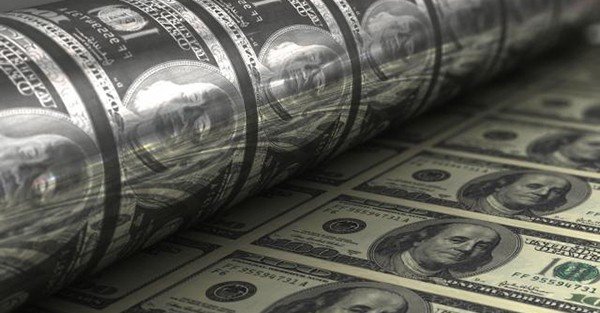[Editor’s note: Tim Price, London-based wealth manager, is filling in for Simon today.]
For those that already have, Mark Carney is the gift that keeps on giving. Borrowed imprudently and struggling to make those interest payments ? Worry not; the Bank of England has your back. For those that don’t have, the Bank of England is taking away your chance of ever realistically saving anything, now that interest rates have been driven down to new historic lows of 0.25%, and may go lower yet. For the asset-rich, for the 1%, for property speculators, and for zombie companies and banks, Carney is your man. For the asset poor, or for savers, or pensioners, or insurance companies, or pension funds, the Bank of England has morphed from being anti-inflationary fireman to monetary arsonist.
The economist Ludwig von Mises foresaw all this, nearly a century ago. He called it “the crisis of interventionism”. Actions have consequences everywhere (except in Keynesian and Marxist economic theory). Interfere with the free market process and inefficiency and complexity are certain to rise. More actions and interventions are required. Pretty soon the entire system becomes a Heath Robinson contraption requiring constant amendments and ad hoc fixes and bolt-on workarounds. Welcome to the modern monetary system – the last, doomed refuge of the central planner with messianic delusions of adequacy.
“The essence of the interventionist policy is to take from one group to give to another. It is confiscation and distribution. Every measure is ultimately justified by declaring that it is fair to curb the rich for the benefit of the poor.”
But so warped has our monetary system become after almost a decade of furious interventionism that Mark Carney’s redistributive efforts don’t even attempt to deliver to that objective. With interest rates fast approaching the theoretical lower bound of zero, Mark Carney is curbing the prospects of the poor for the benefit of the rich. He is redistributing capital from the prudent saver and gifting it to the borrower and the speculator. A crisis of too much debt is being met with ever more urgent attempts to prime the credit pump.
Mises had something to say about credit expansion, too.
“There is no means of avoiding a final collapse of a boom brought about by credit expansion. The alternative is only whether the crisis should come sooner as a result of a voluntary abandonment of further credit expansion or later as a final and total catastrophe of the currency system involved.”
The Bank of England, along with the US Federal Reserve, the European Central Bank and the Bank of Japan, has made it perfectly clear that the credit expansion will continue. They had better hope that Mises was wrong.
In a 2013 essay, Dylan Grice also addressed the crisis of interventionism.
“Prior to the 2008 crash, central banks set interest rates according to what their crystal ball told them the future would be like. They were supposed to raise them when they thought the economy was growing too fast and cut them when they thought it was growing too slow. They were supposed to be clever enough to banish the boom-bust cycle, and this was a nice idea. The problem was that it didn’t work. One reason was because central bankers weren’t as clever as they thought. Another was because they had a bias to lower rates during the bad times but not raise them adequately during the good times. On average, therefore, credit tended to be too cheap and so the demand for debt was artificially high. Since that new debt was used to buy assets, the prices of assets rose in a series of asset bubbles around the world..”
Wealth was redistributed towards the financial sector. It was also redistributed to those who were already asset-rich.
“Who paid ? Those with no access to credit, those with no assets, or those who bought assets late in the asset inflations and which now nurse the problem balance sheets. They all paid. Worse still, future generations were victims too, since one way or another they’re on the hook for it.
“So with their crackpot monetary ideas, central banks have been robbing Peter to pay Paul without knowing which one was which.. But what does it mean for the owner of capital ? If our thinking is correct, the solution would be less monetary experimentation. Yet we are likely to see more.. In an ideal world we would have neither Peters nor Pauls. In the imperfect one in which we live, we have to settle for trying hard to avoid the Pauls, who we fear mistake entrepreneurial competence for proximity to the money well. But when we find the real thing, the timeless ingenuity of the honest entrepreneurs.. we find inspiration too, for as investors we try to model our own practice on theirs..”
With $13 trillion of sovereign debt trading at negative yields, bonds as an asset class are barely investible. They are only a plaything for speculators.
Cash is also increasingly problematic, as the commercial banks are now making it abundantly clear that negative interest rates may soon be upon us, irrespective of what Mark Carney claims to think or want.
By a process of logic and elimination, with cash and bonds (and perhaps property) effectively out of the picture, that leaves common stocks. Given that many stock markets have been artificially boosted by central bank stimulus, that leaves listed stocks that still offer a margin of safety, ideally with principled management and a history of decent shareholder returns. There are fewer of them than there used to be, but they can still be found. They can be found on the roads less travelled.
Perhaps at some point our central bankers will come to appreciate that wealth is not created by the printing of money, nor is it created by a reduction in the official rate of interest – at a time when it is mostly the desperate that want to borrow money. It is created by honest entrepreneurial endeavour, which is itself jeopardised by constant monetary intervention. As Tony Deden puts it,
“Dishonest money has created a culture of speculation out of ordinary producers and savers. As a result, we confuse financial markets for the source of our wealth. Our time preference has been altered so that we seek returns incompatible with the real risks we take. We focus on market activity rather than on the substance that it fails to imply.
“Substance is something that is real. It does not necessarily have to be tangible, but that would be preferable. Whether it is in gold – a form of money – or honest entrepreneurship, substance is rooted in economic reality. And so, understanding substance, whether it is in money or in entrepreneurial and wealth creating activity, is the most important practical skill we must acquire.”








